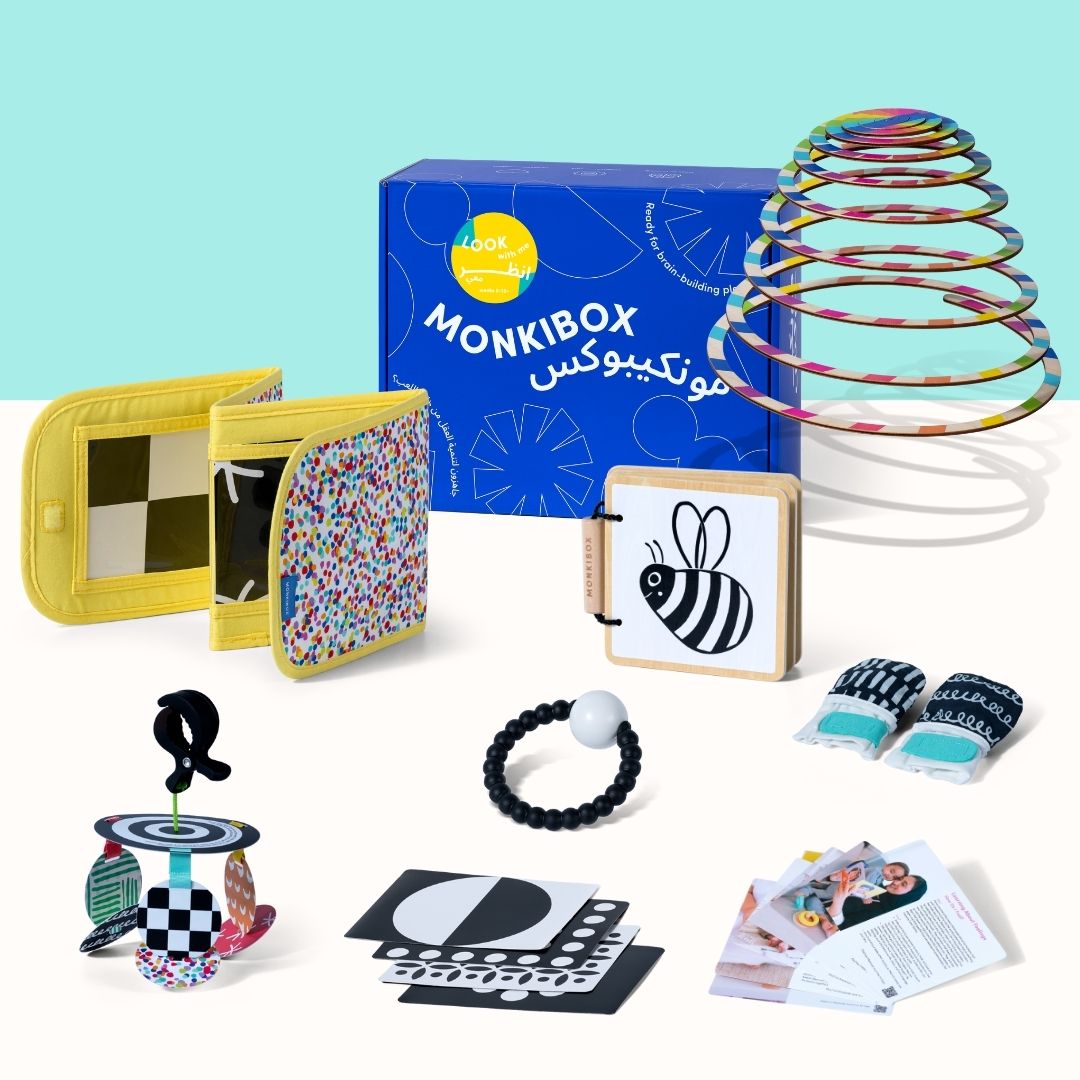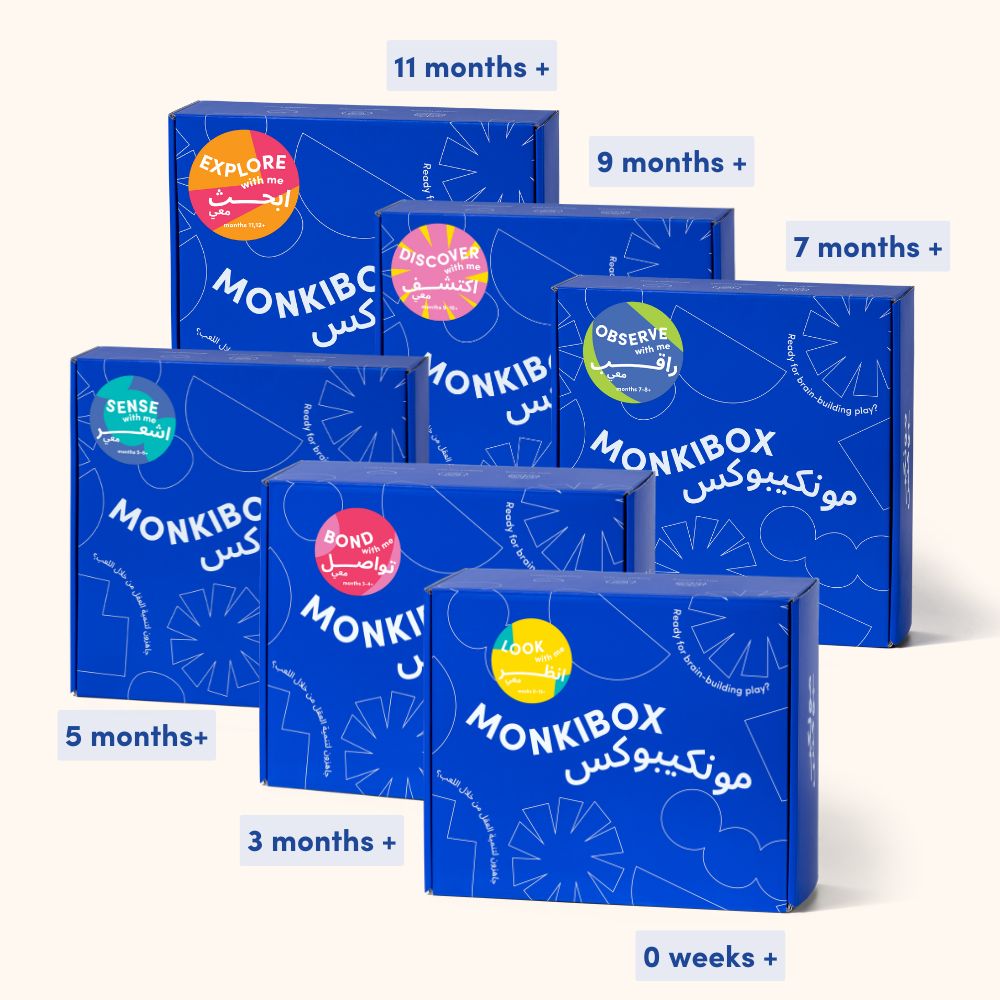فهم مخططات اللعب: أساس التعلم
ربما سمعتم عن "مخططات اللعب" في منشوراتنا الأخرى أو عثرتم عليها بالصدفة على الإنترنت. ولكن ما هي هذه المخططات تحديدًا، ولماذا تُعدّ مهمة؟ مخططات اللعب هي أفعال متكررة يستخدمها الأطفال أثناء اللعب لاستكشاف العالم من حولهم وفهمه. تساعد هذه المخططات طفلكم على ربط أفعاله ذهنيًا بالنتائج التي يلاحظها، مما يُرسي الأساس لمهارات معرفية أكثر تعقيدًا.
مخططات اللعب الرئيسية التي يجب معرفتها:
-
مخطط الاتصال:
يتضمن هذا المخطط ربط الأشياء معًا. شجّع طفلك على ذلك بصنع سلاسل ورقية أو ربط الألعاب، مما يساعده على فهم العلاقات والتسلسلات. -
مخطط النقل:
يحب طفلك نقل الأغراض من مكان لآخر. يمكنكِ تعزيز هذه الرغبة بوضع صناديق في أماكن مختلفة وطلب نقل الألعاب بينها. أباريق الماء من صندوق "تحرك معي" مثالية لهذا الغرض، حيث تتيح له التدرب على الصب والنقل. -
مخطط المسار:
يركز هذا المخطط على حركة الأجسام في الهواء، ويتجلى بوضوح عندما يستمتع طفلك برمي الأشياء أو إسقاطها أو إطلاقها. إنها طريقة عملية لاستكشاف الجاذبية والحركة. -
مخطط التموضع:
هل يستمتع طفلك بترتيب الألعاب أو تكديس الأشياء؟ يتضمن هذا النمط ترتيب الأشياء بطريقة محددة، مما يساعده على تطوير الوعي المكاني والنظام. -
مخطط التغليف:
يحب العديد من الأطفال الالتفاف بالبطانيات أو إخفاء الأشياء في الأماكن المغلقة. يدور هذا النمط حول وضع حدود أو إحاطة الأشياء، وهو ما يمكن تشجيعه من خلال أنشطة مثل بناء الحصون أو تغليف الألعاب. -
مخطط الدوران:
تدوير الأشياء أو تحريكها أمرٌ مثيرٌ للاهتمام للأطفال. يمكنك استكشاف هذا النمط من خلال تدوير عجلات الحافلة من صندوق "تخيل معي" أو حتى تعليمهم كيفية تدوير أنفسهم في أرجاء الغرفة.
دور مخططات اللعب في التنمية
تعتبر هذه المخططات ضرورية للتنمية المعرفية، حيث تضع الأساس للتفكير الأكثر تجريدا ومهارات حل المشكلات في السنوات اللاحقة.
إن فهم أنماط اللعب والتعرف عليها يُساعدك على توفير أنشطة مُستهدفة تُغذي فضول طفلك الفطري وتُعزز عملية التعلم لديه. من خلال التفاعل مع هذه الأنماط، تُدعم نموه المعرفي بطريقة ممتعة وهادفة.





